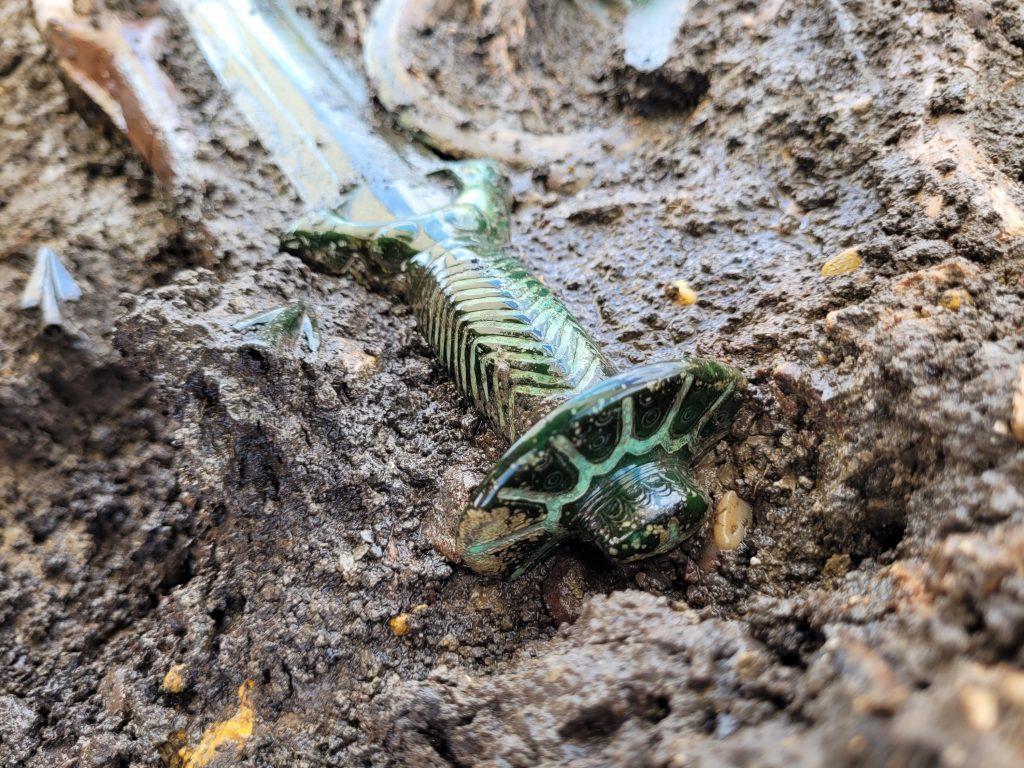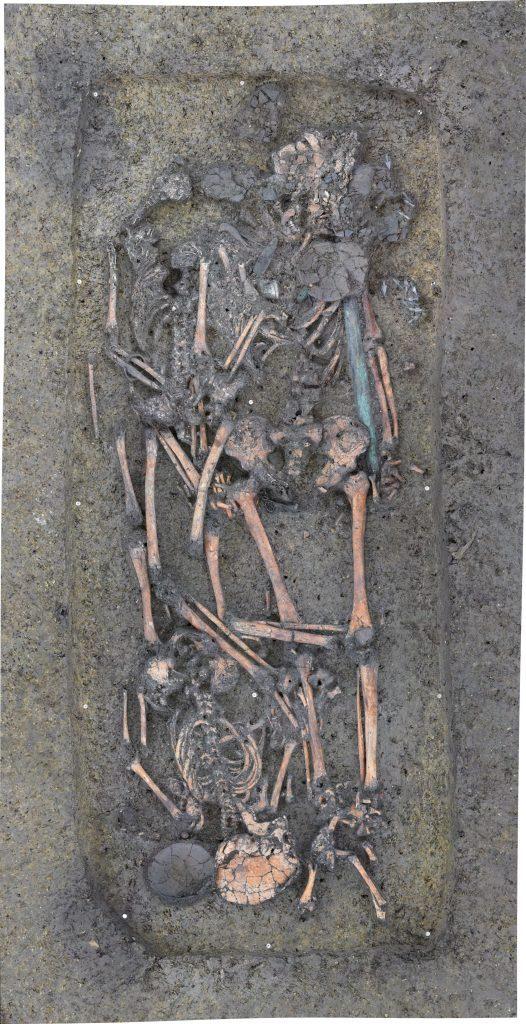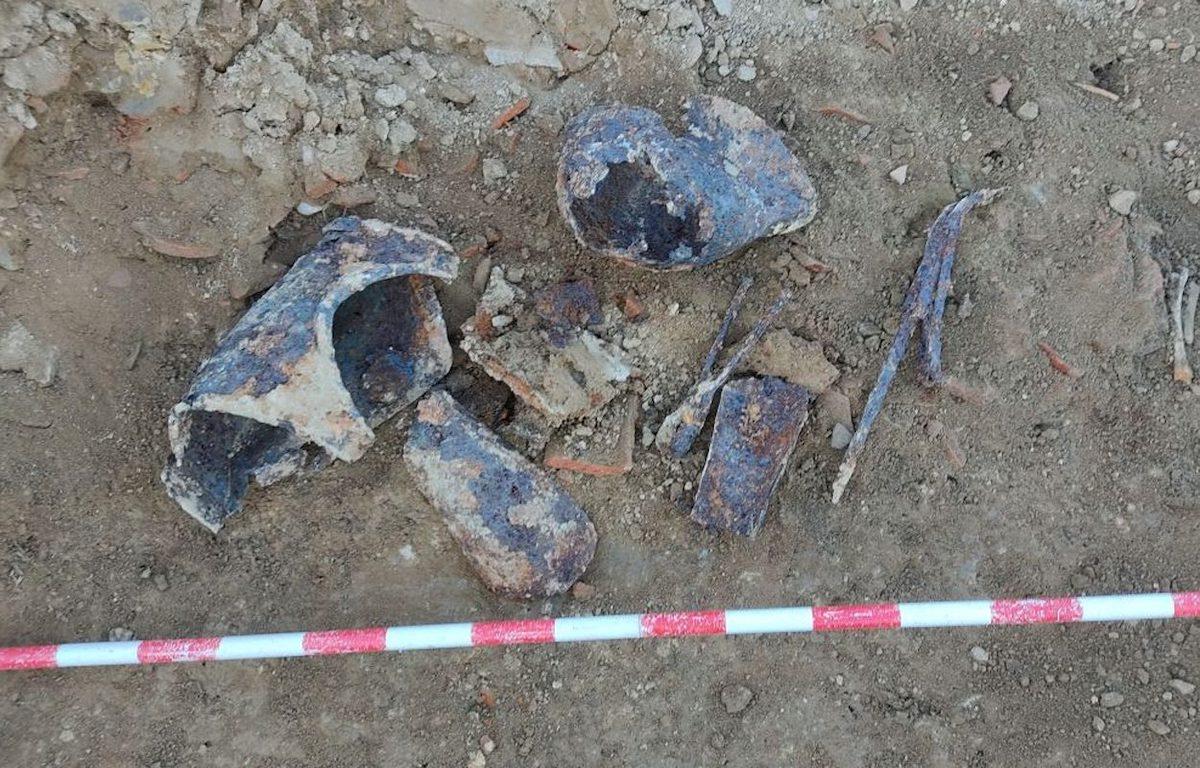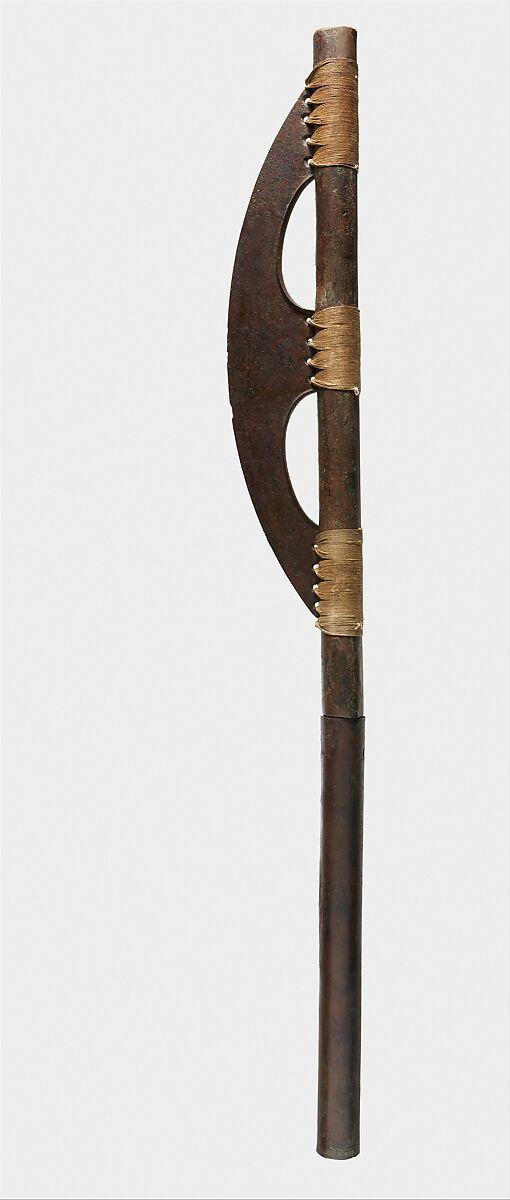In June, German archeologists found a Bronze Age (14th century BCE) fully intact bronze sword in Nördlingen, Germany, which came from soil so dense and clay-like that it enabled the preservation of the still gleaming blade. The uncovering of the sword is miraculous not only because tomb looting in the area has made precious finds a rarity, but because it is also so wonderfully preserved, showing little to no evidence of tarnish beyond the patina-green hue that bronze naturally acquires after years of neglect.
Intricate designs upon the hilt are still visible and the integrity of the metal will allow researchers to analyze more closely the manufacturing process of this and other swords like it. This particular discovery is also noteworthy for the possible social interpretations of the burial it was found in, which contained an adult male, adult female, and adolescent male skeleton along with other ceramic and bronze finds. Anthropological studies of the interred individuals in combination with the materials found alongside them will be able to tell us more about who they might have been to each other and how they might have lived.
































